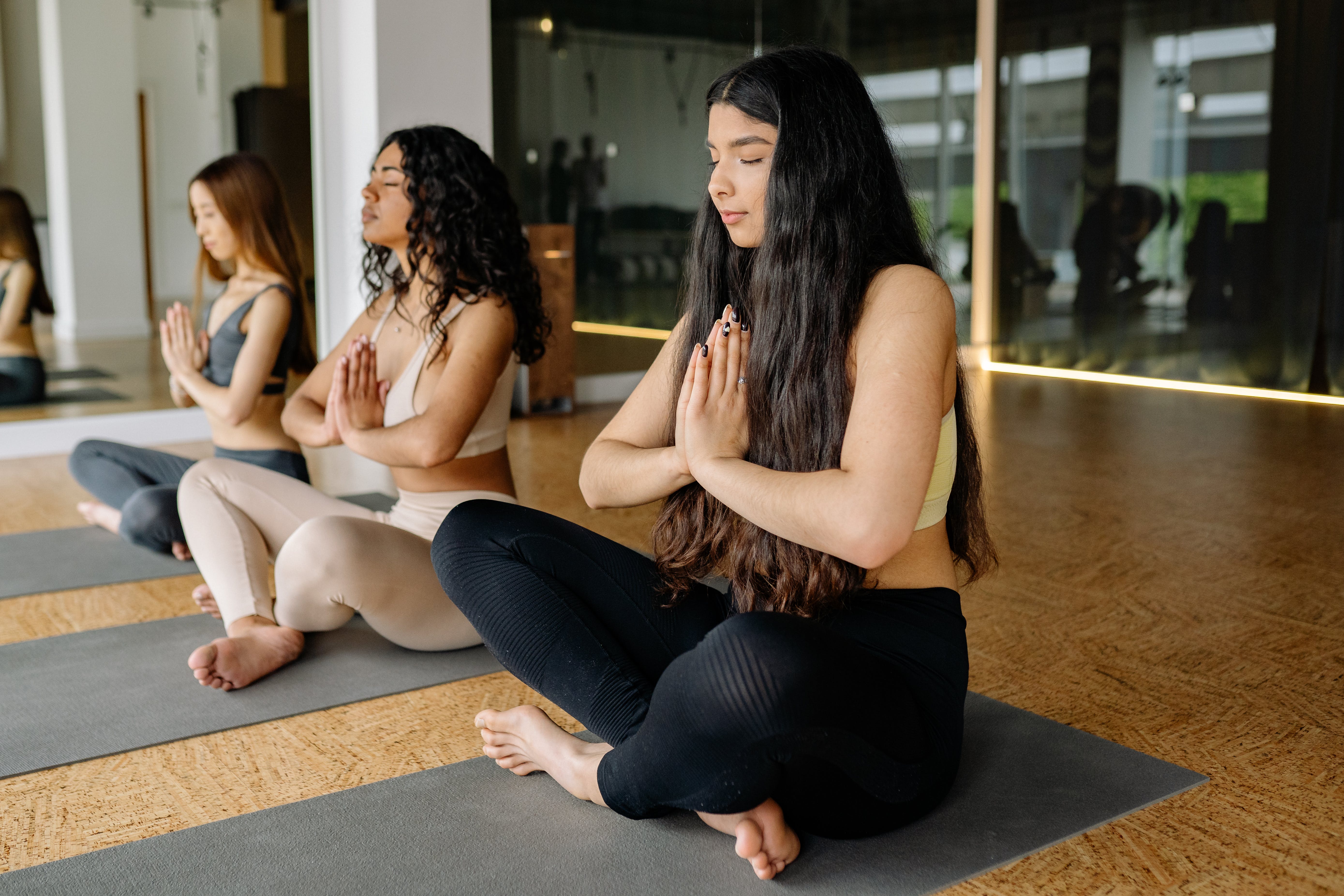This subject is close to my heart, because as a massage practitioner, martial artist, and writer, my hands and wrists are super-important yet take a daily beating.
But avoiding and alleviating wrist pain is a great topic for just about anyone.
Hands and wrists are often neglected. When we feel pain, it reminds us how much we rely on them.
I’m delighted to share what I know about being a good hand and wrist owner and how yoga can help alleviate pain from carpal tunnel syndrome and other wrist and hand complaints.
Before we start, however, note that this post is not intended to substitute for medical advice. If you’re experiencing persistent wrist pain, you should talk about it with a medical professional.
Do I Have Carpal Tunnel Syndrome?
The carpal tunnel is a bony passage in the wrist through which tendons, ligaments, and the median nerve travel to the palm.
Inflammation of the tendons around the median nerve can compress it, a bit like a traffic jam where three lanes suddenly narrow into one lane and everyone starts signaling and getting upset. This compression would typically lead to tingling, numbness, pain, or a burning sensation in your thumb and fingers.
Except for the little finger. The little finger is oblivious to the pain of its digital brethren because the median nerve doesn’t provide sensation to it. That pleasure belongs to the ulnar nerve.
What Causes Carpal Tunnel Syndrome?
The compression that causes carpal tunnel symptoms could be caused by injury, obesity, medication, or repetitive movements, like petrissage or the kind of repeated grabbing movements you might do in a martial arts class.
While people often think typing is a major cause of carpal tunnel, typing is actually a passive repetitive action, putting it low on the list of likely offenders unless you’re typing for more than 20 hours per week.
Although typing and repetitive movements with your mouse are as yet unproven to cause carpal tunnel syndrome, we can agree that computer work can add to the discomfort and pain of someone experiencing carpal tunnel syndrome.
In addition to hardcore typists, people working in the following fields are high on the at-risk list:
- Assembly lines
- Construction
- Highway maintenance
- Machine work, especially working with machines that vibrate
- Needlepoint work
- Professional kitchens
Wrist pain or discomfort is often the first carpal tunnel syndrome wake-up call. You may also experience discomfort or pain up the forearm, too.
Worry not. Yoga exercises may alleviate your wrist pain, whether it’s technically carpal tunnel or not.
Alleviating Carpal Tunnel Pain with Yoga
The best way to alleviate carpal tunnel pain is to build a time machine and undo the strain that caused it.

For those of us without the blueprints for a time-bending device, however, the good news is that research on yoga-based intervention for carpal tunnel syndrome found yoga could improve grip strength and reduce pain.
Here’s what to know in general about yoga for carpal tunnel syndrome:
- While carpal tunnel symptoms may be evident in the wrist, hand, and fingers, warming, stretching, and loosening the neck, shoulders, and arms — along which the median nerves travel — can help alleviate pain at the wrists and hands.
- Gently stretching and moving wrist joints through their range of motion might reduce the pain over time.
- Ease off the pressure where necessary. Don’t force movements that cause sharp pain.
- Avoid doing yoga that puts too much weight on the wrist joint. If you have a regular yoga practice and don’t want to skip too many sessions, try Rachel’s hands-free class or Jonni-Lyn’s wrist-free vinyasa.
- Use props and/or modify your position to minimize the pressure caused by wrist extension.
Specifically, here are some exercises to try.
Neck and Shoulders
- Tilting your head laterally is a good stretch that’s great for relieving carpal tunnel pain. From a front-facing position, let your head fall gently toward your shoulder so that your left ear approaches your left shoulder. Relax your left shoulder, allowing it to drop. Repeat for the other side, moving your right ear toward your right shoulder. Remember to allow your shoulder to drop down as you enjoy this stretch.
- If comfortable, repeat, using your left hand to add light pressure to your head and gently increase the stretch as your left ear moves toward your left shoulder. Repeat for the right side with your right hand lightly helping to move your right ear toward the right shoulder.
- Facing-front, turn your head slowly to the left as you exhale so that you feel a gentle stretch without any pinching sensations. Inhale as you return to face center. Exhale as you turn your head slowly to the right. Return to center and repeat two or three times.
- Finally, make gentle shoulder circles as an effective way to loosen up the shoulders. Rotate in one direction for a few seconds and then reverse, feeling the full range of motion.
Wrists
- Anjali mudra can help relieve wrist pain. Press your palms and fingers together at the chest in a prayer position. Hold firmly for one or two minutes.
- When you’re ready, reverse the Anjali mudra position — press the backs of your hands and fingers together instead of your palms and fingers. Your wrists will be at the top with your fingers pointing downwards. Press firmly but carefully. Maintain this position for a minute or two if comfortable.
- With loose hands, rotate both wrists slowly and gently. Make several full circles and then change direction.
- Vary this rotation keeping your wrists loose. Change direction halfway through as before.
- Bring your left hand forward with your fingers pointing up. Block your left elbow. Then cover all the fingers of your left hand with the fingers of your right hand and pull your fingers toward you gently. Repeat, varying the angle. Then swap sides.
- Make a fist with your left hand. Use your right hand to stretch the left hand, pulling the fist down and toward you so that the wrist bends. Keep your shoulder dropped and your elbow locked. Swap hands and repeat.
- In a seated position, place the backs of your hands on the ground so that your fingertips are facing you, tucked under your legs, and your wrists are facing forward. Get your wrists as close to the ground and your fingers as flat against the ground as comfortable. Hold for a few seconds for a fantastic wrist stretch.

Relief from Carpal Tunnel Pain… on a Beach in British Columbia
For more variations of these exercises and the chance to practice deeper, more precise stretches, check out David’s 37-minute online class Yoga for Carpal Tunnel Syndrome, which includes his unique guidance on all the moves above plus great exercises for stretching, strengthening, and opening up your arms, trapezius muscles, and shoulders.
To benefit from every minute of this video, add to your practice:
- A yoga strap, tie, scarf, or rope about four feet long.
- A couple of soft yoga blocks, a thick pillow, or a blanket you can fold.
- Something with a little weight that you can hold onto with one hand.
If you are looking for something shorter, try David’s 16-minute Hatha Yoga for the Hands and Wrists, 8-minute Yoga for Carpal Tunnel Syndrome Maintenance, or Josh’s 11-minute Keyboard Wrists.
You don’t have to suffer from carpal tunnel syndrome to enjoy these stretches. This gentle but profound yoga routine is just all-around great for the neck, back, shoulders, arms, wrists, and hands. But if you do have wrist pain, your hands will thank you.



Comments
Existing Comments